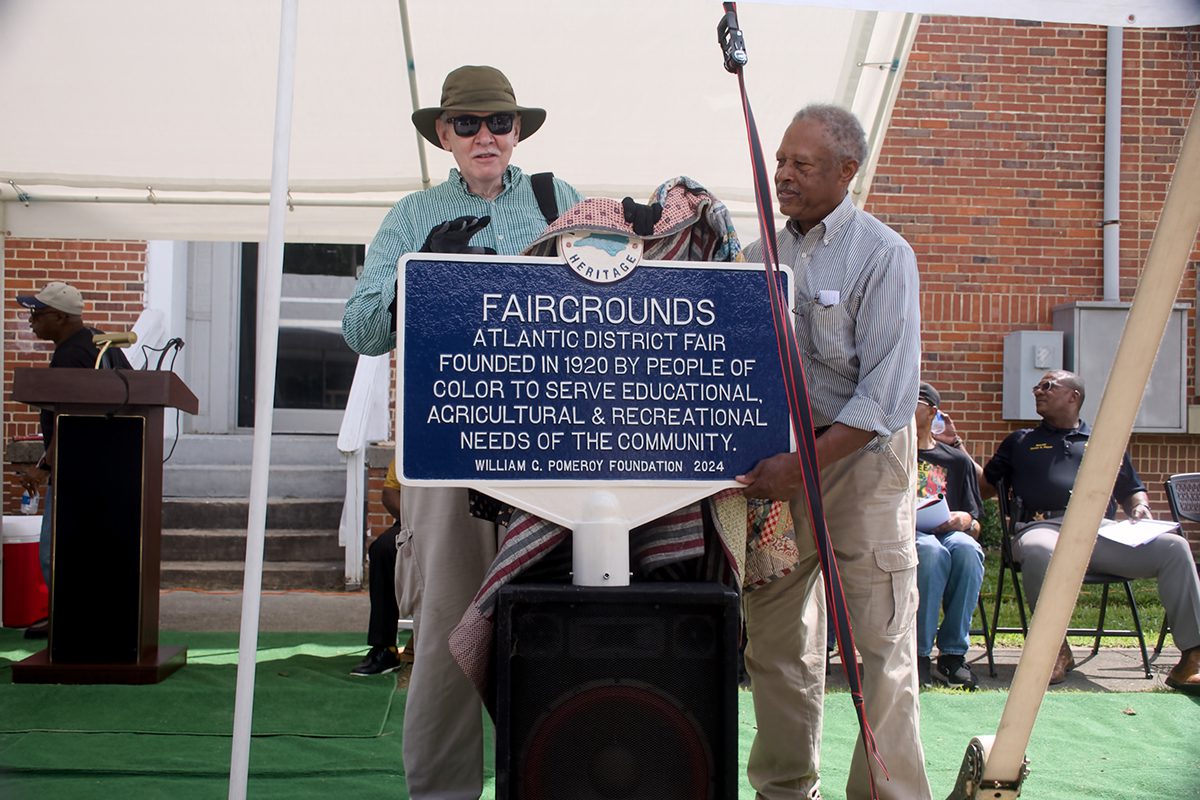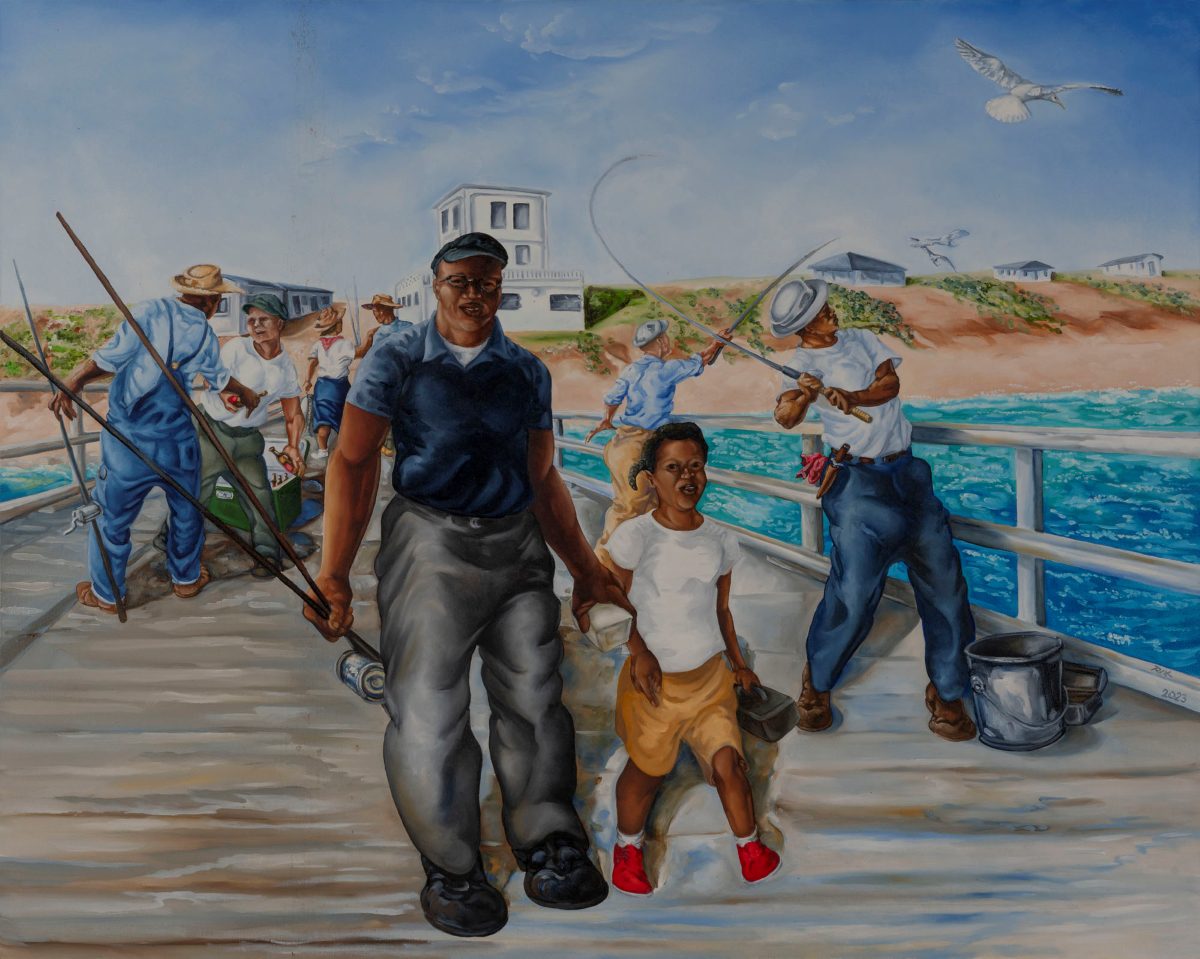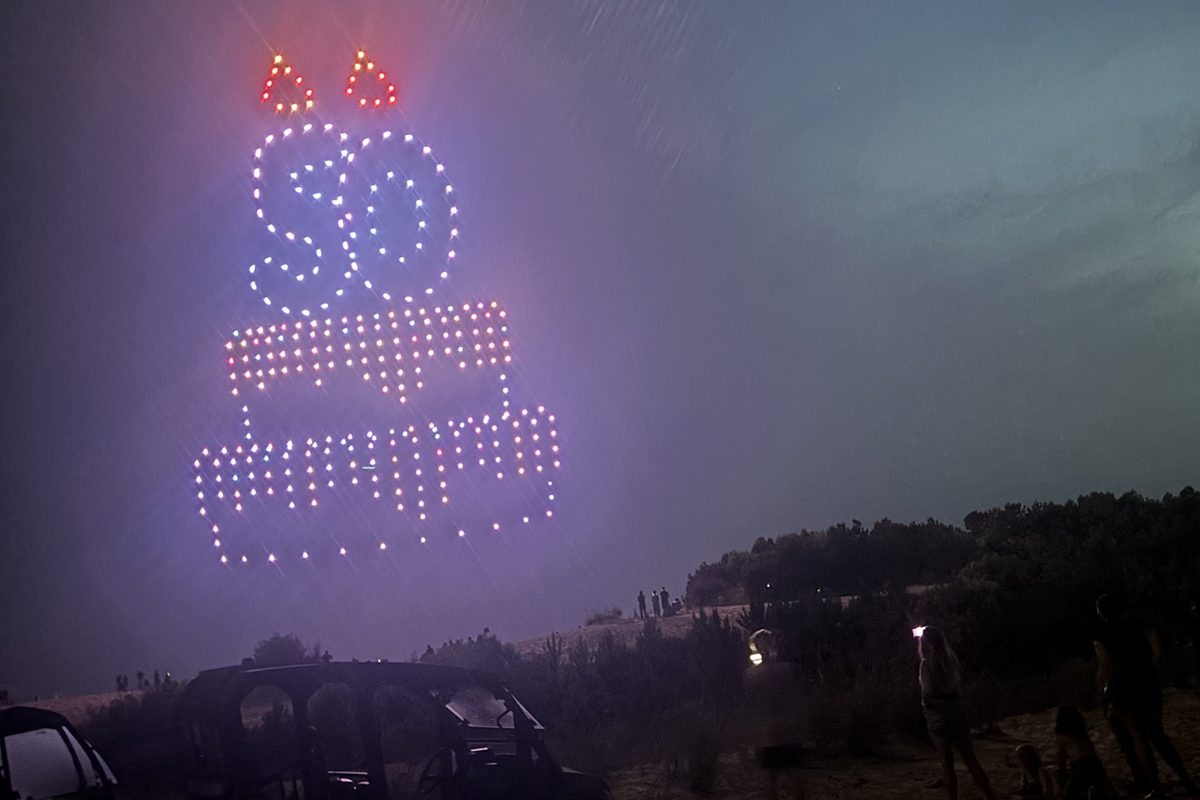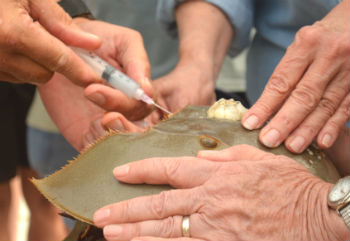 A biologist extracts the blue blood of a horseshoe crab. One of the most heated environmental issues of the East Coast in recent years has been over this ecologically, economically and medically essential species, according to Jim Berkson, director of the Horseshoe Crab Research Center at Virginia Tech University. Photo: Tess Malijenovsky |
What do conch fishermen, little shorebirds known as red knots and the flu vaccination your doctor offers every fall have in common?
All are linked together by their dependence on one of the oddest and most fascinating creatures to inhabit Atlantic coastal waters, Limulus polyphemus, known more commonly as the horseshoe crab.
Supporter Spotlight
Considered to be living fossils, horseshoe crabs have been around for more than 350 million years without stingers, venom or harmful pincers. These ancient arthropods are not actually crabs, being more closely related to spiders and other arachnids than to crustaceans. Every spring around the full and new moons when the tides are highest, horseshoe crabs creep from the depths of sea floor to spawn high on the beaches along the East Coast.
Fishermen harvest them for bait, the medical world uses their blood to detect bacterial contamination and shorebirds rely on their eggs for food. Stress on this species and possible effects on those dependent on it have scientists concerned.
“The battle over this ecologically, economically and medically essential species has become one of the most heated environmental issues on the East Coast in recent years,” said Jim Berkson, director of the Horseshoe Crab Research Center at Virginia Tech University.
While the Delaware Bay is renowned as the largest spawning area for horseshoe crabs in the world, the crabs are often seen in the coastal waters of North Carolina.
Horseshoe crabs have been harvested in America since the 1850s, first ground up for fertilizer and livestock feed and, more recently, to serve as bait for eels and whelks, or conches. In 1992 when the Atlantic cod fishery collapsed, fishermen of the Delaware Bay discovered that horseshoe crabs were excellent bait for welks. The annual horseshoe crab harvest for bait increased from a few hundred thousand to 2.5 million, said Larry Niles, a New Jersey biologist in a National Geographic article.
Supporter Spotlight
Horsehoe crabs are also used in cancer and neurophysiological research, for surgical implants such as pacemakers, and in prosthetic devices. Their blue blood — its color due to its high concentration of copper — contains a compound called LAL, or Limulus amebocyte lysate, which can detect tiny traces of bacterial contamination and trap them in inescapable gel-like clots. Every injectable drug or vaccine certified by the Food and Drug Administration is tested using LAL from horseshoe crabs. It is a simple, nearly instantaneous test; if there is no clot, there is no contamination, and the solution can be considered free of bacteria.
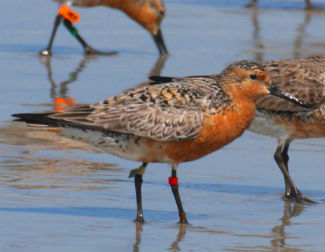 A Red Knot with tags on its legs, which are used to track the species’ declining population. The bird flies 18,000 miles a year and depends on the eggs of horseshoe crabs to refuel at its pit-stop along the East Coast. Photo: Sam Bland |
As important as their role in medicine, horseshoe crabs are even bigger players in ecology. Their protein-packed eggs are a vital source of nutrition for migrating shorebirds, and in particular for red knots. These robin-sized birds fly 9,000 miles from the southern tip of South America to the Arctic and back every year, making stopovers along the mid-Atlantic coast to refuel. They time their flights so that they arrive just as horseshoe crabs lay their eggs.
Smaller numbers of red knots stop along the Outer Banks before making it to the Delaware Bay region. The U.S. Fish and Wildlife Service is proposing to add the bird to the federal endangered species list as a “threatened” species. Its population, the agency says, has declined by as much as 75 percent in some places. Public hearings on the proposal held this spring along the coast.
The birds’ decline can be traced in part to a decline in their food source – horseshoe crab eggs – as well as habitat loss and climate change. If the bird becomes listed as threatened in North Carolina, state and local governments would have to take them into consideration for beach re-nourishment projects.
Marin Hawk, the Atlantic States Marine Fisheries Commission coordinator for horseshoe crabs, says that the northeastern crabs in are in serious decline, in part due to over-harvesting and poaching. North Carolina is included in the fishery commission’s southeast division, which works with N.C. Division of Marine Fisheries to oversee the harvest of horseshoes crabs.
Here in North Carolina, horseshoe crabs are believed to be healthier, says Hawk. According to the state Division of Marine Fisheries’ biologist Tina Moore, horseshoe crabs in this state are considered a sub-population, along with those in South Carolina and Georgia, based on genetics and tagging. Their abundance trends are considered stable with some increases. There are, however, no reliable estimates as to what their numbers actually are, or how their spawning practices affect red knots.
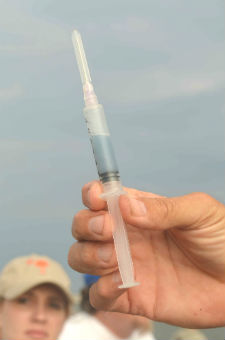 Horseshoe crab blood is blue due to its high concentration of copper. It contains a compound, known as LAL, that can detect traces of bacterial contamination and trap them in clots. Every injectable drug or vaccine certified by the FDA is tested using LAL from horseshoe crab blood. Photo: Tess Malijenovsky |
A commercial license is required to harvest horseshoe crabs. In this state most are harvested for bait, primarily to catch eels and whelks, or conchs. They are considered by-catch, caught in gill and pound nets or in crab trawls while watermen fish for other species, mostly around the inlets of Pamlico and Core sounds. The harvest quota for the state is 24,000 crabs, and for individual fishermen, 50 per trip. Last year, according to Moore, 17,000 crabs were reported.
North Carolina fish houses buy horseshoe crabs from fishermen. Hardy Plyer, manager of the Ocracoke Fish Co., says that there are some fishermen at Ocracoke who bring in crabs, beginning when the weather warms up in the spring. Last year, he says, they met their quota in about three months.
Ocracoke sells the crabs to Wanchese Fish Co. where, according to the manager Mikey Daniels, they are frozen, trucked to Virginia and re-sold to fishermen on the Eastern Shore to use as bait in conch pots. Daniels often maintains an educational tank where he keeps live crabs for visitors. He is interested in the possibility of setting up a bleeding facility.
Skip Kemp, who teaches in the aquaculture program at Carteret County Community College in Morehead City, is also interested in the possibilities of bleeding horseshoe crabs and has several students who want to pursue it. There is a permit in place for biomedical harvesting in North Carolina, but there has not been a bleeding facility here since the early 2000s.
Today it is estimated that a quarter million live crabs are captured each year in the U.S. and delivered to bleeding facilities. Bleeders pierce the tissue around the heart, draining up to 30 percent of the animal’s blood, which may sell for up to $15,000 a quart. The crabs are captive for 24 to 72 hours before being returned and released. LAL manufacturers estimate that less than 3 percent of horseshoe crabs handled die after the bleeding procedure, while studies by universities and government agencies estimate an 85 to 90 percent survival rate.
The LAL industry says the bleeding causes no long-term injury. Studies done by one of the bleeding facilities, Associates of Cape Cod, show that crabs can survive multiple bleedings like human blood donors and that, when returned to their spawning areas, continue to breed without ill effect.
What concerns scientists is that many of those who do survive are not returning to their spawning grounds and producing more offspring. It may be that the capture and bleeding leaves them lethargic and slow and less likely to follow the tides back to their spawning ground. It also may make them anemic and less likely to breed.



